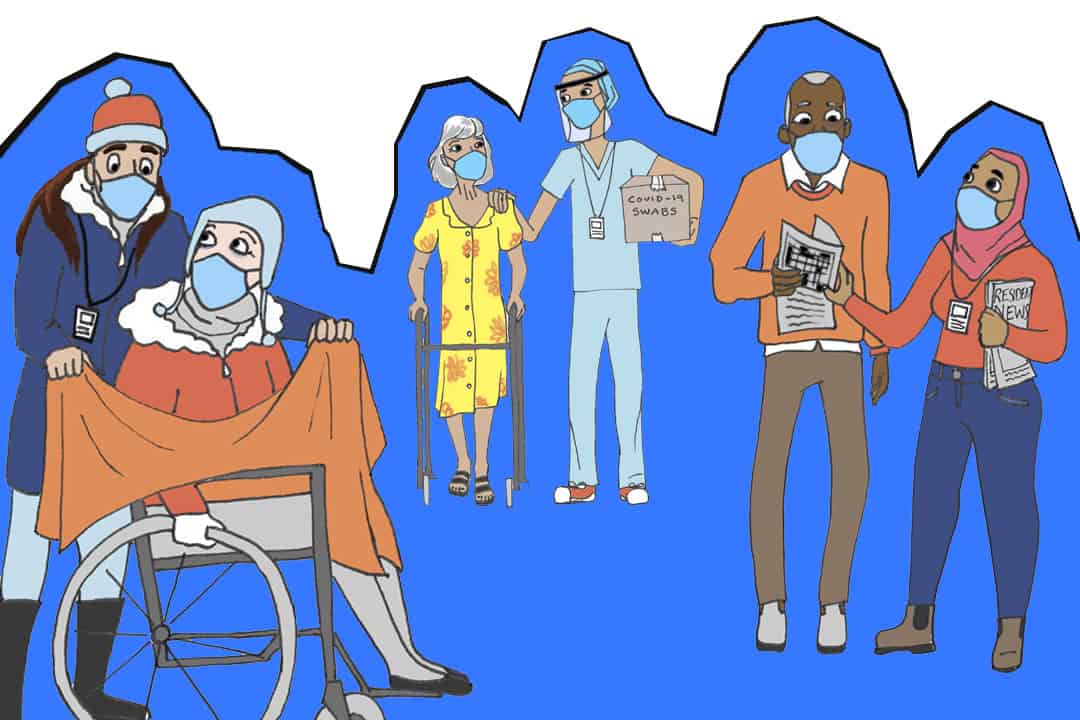Long-term care (LTC) homes have been hit hard by the COVID-19 pandemic, resulting in devastating losses of residents as well as unprecedented levels of worker burnout. Yet, U of T students in various clinical programs have continued to pursue placements at LTC homes throughout the pandemic.
LTC placement offerings at U of T
In past years, first-year undergraduate nursing students had to complete a placement in an older person care setting. According to Linda Johnston, Dean of U of T’s Lawrence S. Bloomberg Faculty of Nursing, this was a requirement that only half this year’s cohort was able to fulfill due to “public health restrictions on movement between clinical settings.”
Johnston added that only 28 people, or 16 per cent of first-year nursing students, completed this placement in LTC specifically this year.
According to Michelle Boyd, an advanced standing master’s of social work (MSW) student, the MSW gerontology specialization only has around 25 students, many of whom are doing research-based or remote placements this year.
“I have only met a handful of people who have career goals related to working in long-term care,” Boyd wrote in an email to The Varsity. “I think there are a lot of problems in the system, and have been for years, and it can be daunting to imagine going into a system that you know isn’t perfect.”
“Long-term care has been chronically underfunded provincially which has led to a lot of issues, and [we have] the disparities between for-profit and non-profit homes to navigate as well,” she added. “I think in general staff of long-term care homes are overworked and COVID-19 has only made things worse.”
Desperate conditions
Kyle Forman, a second-year MSW student who was in the gerontology stream in his first year, was doing his placement at a LTC home when the pandemic hit. Forman wrote in an email to The Varsity that it “was a traumatizing experience. The home had dozens of deaths, including residents on my caseload. The director of care, one of my supervisors, suddenly and tragically passed away.”
Forman has finished his placement but continues to feel angry about the conditions he witnessed. “It is painful to think about the lives that were cut short. It angers me to think about how preventable these deaths were,” he wrote.
He believes that the LTC home was not given adequate personal protective equipment (PPE) or thorough enough instructions from the ministry of health. “There was not enough physical space to properly quarantine residents,” he added. “And the home was of course understaffed.”
After his experience in LTC, Forman switched out of his gerontology specialization and decided to study mental health and health instead. This year, his placement is remote and research-based.
Kristen Myskiw, a first-year master’s of nursing student, was redeployed from her hospital nursing job to help out at a LTC home that had suffered a COVID-19 outbreak and staffing shortage. “They were basically desperate for people to volunteer,” Myskiw said in an interview with The Varsity. “I don’t know what possessed me to do it, but I needed to help in some way.”
“We had heard a little bit about what was going on at the home, and the conditions sounded so bad,” Myskiw continued. “I just couldn’t imagine the poor residents [who] were suffering.” She said if one LTC home has an outbreak, “it spreads like wildfire.”
Myskiw echoed Forman’s complaints about the effects of limited PPE availability and limited staffing on the outbreak. She added, “A lot of these people that are working in [LTC] are working at multiple homes, or they’re doing multiple jobs to make ends meet.”
Impact on workers
For Myskiw, the experience was stressful but rewarding. “I was scared because up until then, I had not cared for a [COVID-19] patient… so this would be me voluntarily exposing myself to COVID-19,” she said. “It was really nerve-wracking going in there.”
Like many LTC workers during the pandemic, Myskiw found herself suffering from burnout. “I have so much more respect for people that work in [LTC] now,” she said, calling the workload “incredibly heavy.”
“In my normal position, I might be assigned four or five patients on a day shift and up to eight patients on a night shift. [But] you go there, and you’re the one nurse for 30 patients… It was exhausting working there,” she said. “I don’t think it’s sustainable to work there for a long time.” Myskiw worked at the home for three and a half weeks before returning to her regular job.
Boyd is doing her social work placement at Christie Gardens, a retirement home in Toronto. Because of her previous experience working in retirement homes during the pandemic, Boyd wasn’t anxious about the in-person aspect.
“I was actually really thankful to be matched with an in-person practicum through the University of Toronto because some other institutions weren’t offering those to social work students, which would have really affected how I viewed my program,” she said in an interview with The Varsity.
“With older people… you just kind of can’t get the same learning experience unless you’re face to face… The majority of what I do is very social,” she added. “You can’t really physically distance from a lot of folks, especially if they’re hearing impaired or cognitively impaired.”
Myskiw and Boyd have received both doses of the COVID-19 vaccine. At the retirement home where Boyd is working, all consenting residents have also been fully vaccinated. “Now that the majority of staff and residents are vaccinated, there is a feeling of relief and hope that we are on the right path forward,” she wrote.


